Chapter 2: Navigating Licenses and Permits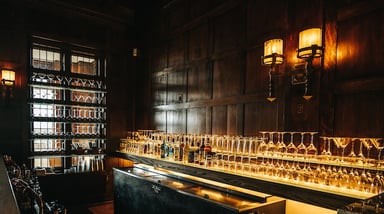 When it comes to opening a bar, one of the most important aspects to consider is obtaining the necessary licenses and permits. This chapter will guide you through the complex world of legal requirements, ensuring that you have all the paperwork in order to operate your establishment smoothly and legally.
When it comes to opening a bar, one of the most important aspects to consider is obtaining the necessary licenses and permits. This chapter will guide you through the complex world of legal requirements, ensuring that you have all the paperwork in order to operate your establishment smoothly and legally.
Obtaining licenses and permits can vary depending on your location, so it's crucial to research the specific regulations in your area. From liquor licenses to health permits, you'll need to understand the specific requirements and processes involved.
One critical aspect of running a bar is managing your inventory effectively. Keeping track of the stock levels, tracking usage, and ensuring timely restocking are vital for smooth operations. This is where bar inventory management software can be a game-changer.
Bar inventory software is designed to streamline the inventory management process, making it more efficient and accurate. With advanced features like barcode scanning, real-time updates, and comprehensive reporting, it enables you to monitor your stock levels with ease. This software also helps in identifying trends, minimizing waste, and optimizing purchasing decisions.
Implementing bar inventory software can save you time, reduce errors, and ultimately improve profitability. It provides a centralized system for inventory control, eliminating the need for manual spreadsheets or guesswork. By automating tasks such as order generation and tracking, it allows you to focus more on providing exceptional customer experiences.
When selecting bar inventory software, consider factors such as user-friendliness, compatibility with your POS system, and scalability as your business grows. It's worth exploring different options and reading customer reviews to find a solution that aligns with your specific needs.
In conclusion, obtaining the necessary licenses and permits is a crucial step in opening a bar. Additionally, implementing bar inventory software can revolutionize the way you manage your inventory, providing efficiency, accuracy, and improved profitability. By staying informed on legal requirements and embracing technology, you'll navigate through this chapter successfully, setting a strong foundation for your bar's operations.
Liquor Inventory Experts
Topics: Bar inventory, bar inventory levels, bar inventory system, liquor control, bar inventory software
Chapter 1: Dreaming of a Bar
Ah, the dream of opening a bar! It all begins with a flicker of inspiration, a desire to create a space where people can come together, unwind, and indulge in their favorite libations. This chapter is all about embracing that initial spark, nurturing your passion, and laying the foundation for your bar venture.
Picture it: the laughter, the clinking of glasses, the vibrant energy in the air. The dream of a bar is often fueled by a love for socializing and a deep appreciation for the art of mixology. You imagine a place where friends, old and new, gather to share stories, celebrate milestones, or simply enjoy a momentary escape from the everyday grind.
But dreams alone aren't enough. This chapter reminds you that turning your vision into reality requires careful planning and research. It's about recognizing the challenges and opportunities that lie ahead, and taking the necessary steps to bring your dream to life.
You'll start by exploring your motivations and goals for opening a bar. Is it about creating a cozy neighborhood pub or an upscale cocktail lounge? Are you driven by a passion for craft beer or a love for inventive cocktails? Clarifying your vision will serve as a guiding light throughout the entire process.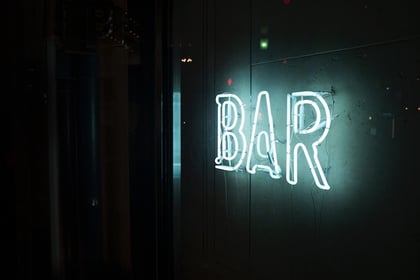
Next, you'll delve into market research. Understanding your target audience, local competition, and industry trends will help you carve out a unique space in the market. You'll assess the demand for your concept and identify potential gaps to fill.
Of course, financial considerations come into play as well. This chapter prompts you to conduct a preliminary assessment of costs involved in opening a bar, from securing a location to purchasing equipment and obtaining licenses. It's essential to develop a realistic budget and explore potential funding options early on.
Lastly, this chapter encourages you to surround yourself with a network of support. Seek advice from experienced bar owners, connect with industry professionals, and consider partnering with individuals who share your passion and complement your skill set.
In the end, this chapter reminds you that dreaming of a bar is just the beginning. It's about embracing that initial spark and channeling it into action. So, put pen to paper, visualize your dream, and let the adventure unfold as you embark on the path towards opening your own bar. Cheers to your dreams becoming a reality!
Topics: Bar inventory, Bar trends, NightClub Management, Lineup control, Bar Management, Nightclub Consulting, Control
I ntroduction: A 10 Part Tutorial.
ntroduction: A 10 Part Tutorial.
Welcome to the world of opening a bar, where dreams of creating a vibrant social hub come to life. In the following chapters, we will embark on a journey through the various aspects of turning your vision into reality. From the initial spark of inspiration to the finer details of managing operations, we'll explore the key elements that contribute to a successful bar.
Chapter by chapter, we'll guide you through the exciting and sometimes challenging process of opening up a bar. You'll gain insights into the legalities of licenses and permits, learn the art of selecting the perfect location, and discover the secrets of crafting a menu that entices your customers.
We'll dive into the importance of designing an inviting atmosphere and building a stellar team that brings your vision to life. You'll delve into the world of mixology and explore marketing strategies to attract patrons to your establishment. We'll also delve into financial management and customer relationship building, emphasizing the significance of nurturing connections with your guests.
Whether you're a seasoned entrepreneur or a passionate enthusiast, this guide will provide you with valuable knowledge and practical advice to set you on the path to a thriving bar. So, let's raise a glass and begin this exciting journey together!
Topics: Bar inventory, Bar trends, Classic drinks, Bar Management, Increasing Profits, Loss prevention, Hospitality, Drink Recipes, Bar Promotion
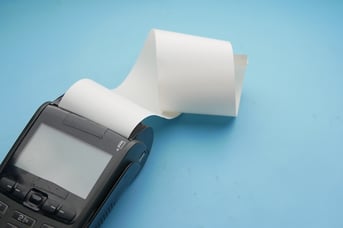 Leveraging technology solutions can greatly streamline bar inventory processes, enhancing efficiency and accuracy within a "bar inventory system" and "liquor inventory system." Let's explore some key technology solutions that can help bars optimize their inventory management.
Leveraging technology solutions can greatly streamline bar inventory processes, enhancing efficiency and accuracy within a "bar inventory system" and "liquor inventory system." Let's explore some key technology solutions that can help bars optimize their inventory management.
1. Bar Inventory Systems: Implementing a dedicated bar inventory system or liquor inventory management software provides a centralized platform to track and manage inventory. These systems offer real-time visibility, automated reordering, and generate reports for analysis.
2. Barcode Scanning: Utilize barcode scanning technology to expedite inventory counting and reduce human errors. Each inventory item can be assigned a unique barcode, allowing for quick and accurate scanning during inventory checks.
3. Mobile Applications: Mobile inventory management applications enable staff to access inventory information, conduct counts, and update stock levels using handheld devices. This eliminates the need for manual data entry and provides flexibility in performing inventory tasks.
4. Point-of-Sale (POS) Integration: Integrate the bar inventory system with the POS system to automate inventory updates based on sales transactions. This real-time synchronization ensures accurate tracking and prevents discrepancies between recorded sales and actual inventory.
5. Internet of Things (IoT) Sensors: IoT sensors can monitor stock levels, temperature, and other environmental factors in real-time. These sensors provide automated alerts when inventory thresholds are reached, ensuring timely restocking and minimizing stockouts.
6. Cloud-Based Storage: Storing inventory data in the cloud offers accessibility, scalability, and data security. Cloud-based systems allow authorized personnel to access inventory information from anywhere, facilitating remote inventory management.
7. Data Analytics and Reporting: Utilize data analytics tools integrated with the inventory system to gain insights into sales trends, consumption patterns, and inventory performance. Customizable reports help identify opportunities for optimization and informed decision-making.
8. Supplier Portals: Implement online supplier portals that allow for seamless communication, ordering, and tracking of inventory with vendors. This streamlines the procurement process, ensures accurate delivery tracking, and enhances supplier relationships.
9. Internet of Things (IoT) Tracking: IoT tracking devices can be attached to high-value inventory items, such as kegs or premium liquor bottles, to monitor their location and movement. This technology helps prevent theft and ensures accurate inventory control.
10. Training and Support: Offer staff training and ongoing support to ensure efficient utilization of technology solutions. Empower them to leverage the capabilities of the systems and address any technical issues or questions they may encounter.
By implementing technology solutions tailored to bar inventory management, bars can streamline processes, improve accuracy, and enhance overall efficiency. Bar inventory systems, barcode scanning, mobile applications, POS integration, IoT sensors, cloud-based storage, data analytics, supplier portals, IoT tracking, and comprehensive training enable bars to optimize their inventory control systems and maximize profitability in the competitive hospitality industry.
Topics: Bar inventory, nightclubs, managing liquor inventory cost, receiving inventory, liquor inventory app

Maintaining effective bar inventory control is essential for the smooth operation of a bar, and implementing best practices within a "bar inventory system" and "liquor inventory system" can optimize inventory management. Let's explore some key best practices for bar inventory control.
-
Categorize and Organize: Properly categorize and organize inventory items such as liquor bottles, kegs, mixers, and garnishes. This ensures easy identification, efficient counting, and reduces the chances of errors.
-
Accurate Measurement: Use calibrated measuring tools to accurately measure initial stock levels and track consumption. Precise measurements help maintain accurate inventory records and prevent discrepancies.
-
Regular Inventory Counts: Conduct regular inventory counts to monitor stock levels and identify any variances. Consistency in counting ensures accurate records and allows for timely reordering.
-
Set Par Levels: Determine par levels for each inventory item based on historical data, sales trends, and customer demand. These levels act as thresholds, triggering reordering when stock reaches a specified minimum.
-
FIFO Method: Implement the "first in, first out" (FIFO) method to ensure older inventory is used before newer stock. This prevents spoilage, minimizes waste, and maintains product quality.
-
Technology Integration: Utilize bar inventory systems or liquor inventory management software to streamline inventory control. These systems provide real-time tracking, automate reordering, and generate reports for analysis and decision-making.
-
Supplier Relationships: Cultivate strong relationships with suppliers to ensure reliable and timely deliveries. Regular communication with vendors helps negotiate favorable terms, secure competitive pricing, and address any supply chain issues.
-
Staff Training: Train bartenders and staff on inventory control best practices, including accurate pouring techniques and minimizing spillage. Educate them about the importance of inventory management and their role in maintaining accurate records.
-
Loss Prevention Measures: Implement measures to prevent theft and reduce losses, such as surveillance cameras, bottle locks, and secure storage areas. Staff awareness and vigilance play a crucial role in preventing inventory shrinkage.
-
Data Analysis and Adjustment: Analyze inventory data regularly to identify trends, patterns, and areas for improvement. Adjust inventory levels, ordering strategies, and pricing based on data insights to optimize inventory control and profitability.
By implementing these best practices, bars can establish effective bar inventory systems and liquor inventory systems. Accurate tracking, efficient stock management, and minimized waste contribute to improved profitability and customer satisfaction. Bar inventory control is a continuous process that requires attention, adaptability, and a commitment to optimizing operations.
Topics: Bar inventory, Bar Management, bar control, liquor control, bar inventory software
Implementing effective bar inventory control practices is crucial for maintaining accurate stock levels, minimizing waste, and maximizing profitability within a "bar inventory system" and "liquor inventory system." Let's explore some best practices that can help bars achieve efficient inventory control.
-
Categorize and Organize: Categorize inventory items based on type, brand, and size. Organize bottles, kegs, and supplies in a systematic manner for easy counting and restocking. This ensures efficient inventory management and reduces errors during inventory checks.
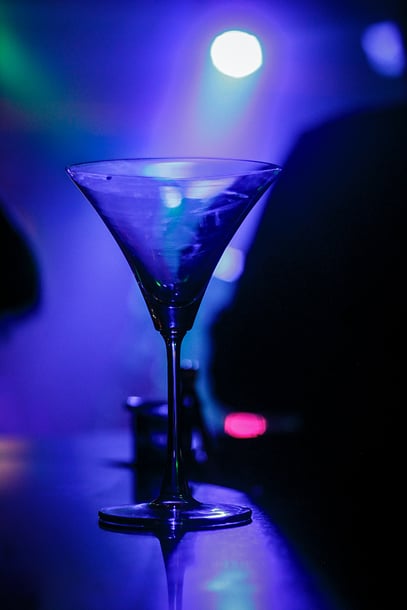
Accurate Measurement: Use precise measuring tools, such as scales or liquor meters, to measure and record initial stock levels. Consistently measure and track consumption to maintain accurate inventory records.
-
Standardized Pouring Methods: Train bartenders to follow standardized pouring methods for consistent drink portions. This helps control costs, minimize over-pouring, and maintain accurate inventory levels.
-
Regular Inventory Counts: Conduct frequent inventory counts to monitor stock levels. Regularly reconcile recorded quantities with actual stock to identify discrepancies and address any issues promptly.
-
Utilize Bar Inventory Systems: Implement a reliable bar inventory system or liquor inventory management software. These systems automate inventory tracking, generate reports, and streamline processes, improving accuracy and efficiency.
-
Set Par Levels: Determine optimal par levels for each inventory item based on consumption patterns and demand. Set reorder points to prevent stockouts and maintain adequate stock levels without excess inventory.
-
Minimize Shrinkage: Implement security measures, such as surveillance cameras and bottle locks, to deter theft and reduce shrinkage. Train staff on the importance of inventory control and implement strict procedures to minimize spillage and waste.
-
Vendor Relationships: Cultivate strong relationships with reliable suppliers. Communicate regularly, negotiate favorable terms, and ensure timely deliveries to maintain a smooth supply chain and minimize disruptions.
-
Data Analysis: Regularly analyze inventory data, sales trends, and customer preferences. Use this information to make informed decisions regarding pricing, menu offerings, and ordering strategies to optimize inventory control.
-
Training and Communication: Provide comprehensive training to staff on inventory control practices, including accurate measurement, proper handling, and effective utilization of the inventory management system. Foster open communication to address any inventory-related concerns or suggestions from the team.
By implementing these best practices, bars can enhance their bar inventory systems and liquor inventory systems, ensuring accurate tracking, efficient stock management, and improved profitability. Effective inventory control contributes to cost savings, waste reduction, and an overall smoother operation within the bar environmen
Topics: Bar inventory, Bar staff, liquor purchasing, liquor inventory system, liquor control
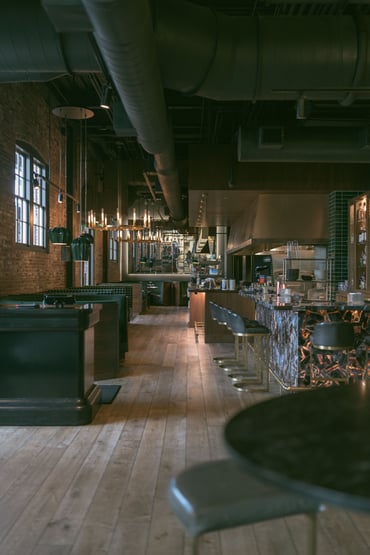
Inventory control systems are indispensable for bars seeking efficient management of their inventory, particularly in terms of a "bar inventory system" and "liquor inventory system." These systems enable bars to streamline processes, minimize losses, optimize stock levels, and enhance profitability. Let's explore some key features and benefits of inventory control systems for bars.
-
Real-time Tracking: A robust bar inventory system provides real-time tracking of inventory levels. Bar managers can instantly view the quantities of liquor bottles, beer kegs, wine bottles, mixers, and other supplies. This allows for accurate decision-making and proactive management.
-
Automated Reordering: Inventory control systems can automate the reordering process by setting par levels for each item. When stock levels reach the predefined threshold, the system generates automatic purchase orders, ensuring timely replenishment and preventing stockouts.
-
Loss Prevention: Bar inventory systems help identify discrepancies and prevent losses due to theft, over-pouring, or unauthorized consumption. By reconciling sales data with actual inventory levels, bars can detect any anomalies and take corrective measures to minimize losses.
-
Cost Control: Effective inventory control directly impacts cost management. By tracking consumption patterns and monitoring stock levels, bars can identify areas of excessive waste or overstocking, enabling them to optimize costs and maximize profitability.
-
Reporting and Analytics: Inventory control systems provide comprehensive reports and analytics on inventory performance, sales trends, and consumption patterns. These insights enable bars to make data-driven decisions, forecast demand accurately, and adjust ordering strategies for improved efficiency.
-
Integration with POS Systems: Integrating the inventory control system with the bar's point-of-sale (POS) system ensures seamless synchronization between sales and inventory data. This integration reduces manual effort, improves accuracy, and provides real-time updates on inventory levels.
-
Vendor Management: Inventory control systems facilitate effective vendor management. Bars can track vendor performance, compare pricing, negotiate favorable terms, and maintain strong relationships with suppliers, ensuring timely deliveries and competitive pricing.
-
Centralized Data Storage: Inventory control systems offer centralized data storage, eliminating the need for manual record-keeping and paperwork. This streamlines inventory management, minimizes errors, and allows for easy access to historical data and audit trails.
-
Customization and Scalability: Bar inventory systems can be customized to fit the specific needs of different establishments. Whether it's a small neighborhood bar or a large-scale venue, the system can scale accordingly to accommodate growth and changing requirements.
-
Time and Resource Savings: By automating inventory tracking, reordering, and reporting, inventory control systems save valuable time and resources for bar owners and staff. This enables them to focus on core operations, customer service, and strategic decision-making.
In conclusion, inventory control systems play a pivotal role in effective management of bar inventory systems and liquor inventory systems. With features like real-time tracking, automated reordering, loss prevention measures, cost control, and integration with POS systems, these systems streamline processes, optimize stock levels, and enhance profitability for bars. Implementing a reliable inventory control system empowers bars to stay competitive in the industry and deliver exceptional customer experiences.
Topics: liquor inventory, Bar inventory, bar inventory system, liquor inventory system
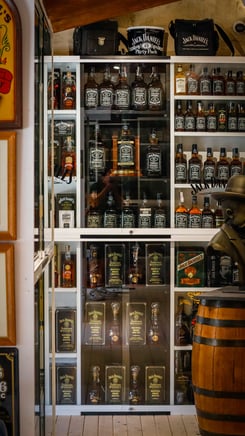 Tracking and managing liquor inventory is a critical aspect of running a successful bar. Effective management ensures accurate stock levels, reduces costs, prevents theft, and optimizes profitability. Let's explore some essential strategies for tracking and managing liquor inventory within a bar inventory system and liquor inventory system.
Tracking and managing liquor inventory is a critical aspect of running a successful bar. Effective management ensures accurate stock levels, reduces costs, prevents theft, and optimizes profitability. Let's explore some essential strategies for tracking and managing liquor inventory within a bar inventory system and liquor inventory system.
-
Accurate Measurement: Begin by measuring and recording the initial stock levels of all liquor bottles. Use precise measuring tools such as scales or liquor meters to determine the exact quantities.
-
Regular Inventory Counts: Conduct regular inventory counts to track the consumption of liquor. This can be done on a weekly, bi-weekly, or monthly basis. Compare the recorded quantities with the actual stock levels to identify any discrepancies.
-
Categorization and Organization: Categorize liquor inventory by type, brand, and size. Organize the bottles in a systematic manner, making it easier to locate and count them during inventory checks.
-
Standardized Pouring Methods: Implement standardized pouring methods and train bartenders to follow them consistently. This reduces wastage and ensures accurate portion control.
-
Bar Inventory System: Utilize a reliable bar inventory system or inventory management software to streamline tracking and management processes. These systems can track sales, generate reports, and help with forecasting and ordering.
-
Loss Prevention Measures: Implement measures to prevent liquor theft or unauthorized consumption. This includes securing storage areas, limiting access to authorized personnel, and monitoring inventory closely for any irregularities.
-
Reordering and Stock Control: Analyze liquor consumption patterns and set par levels for each type of liquor. Establish a reordering system based on these par levels to prevent stockouts and ensure a continuous supply.
-
Supplier Relationships: Cultivate strong relationships with liquor suppliers. Maintain open communication and negotiate favorable terms to ensure timely deliveries and competitive pricing.
-
Training and Education: Provide training to staff members on the importance of accurate liquor inventory management. Educate them on proper handling, pouring techniques, and the significance of minimizing waste.
-
Ongoing Analysis and Adjustment: Continuously analyze liquor inventory data, sales trends, and customer preferences. Make adjustments to your inventory management strategies based on this analysis to optimize stock levels and increase profitability.
In conclusion, tracking and managing liquor inventory is crucial within a bar inventory system and liquor inventory system. By implementing accurate measurement techniques, conducting regular inventory counts, utilizing technology, preventing losses, maintaining supplier relationships, and analyzing data, bars can efficiently track and manage their liquor inventory. This results in better cost control, enhanced customer service, and improved profitability for the establishment.
Topics: liquor inventory, Bar inventory, liquor theft, inventory control
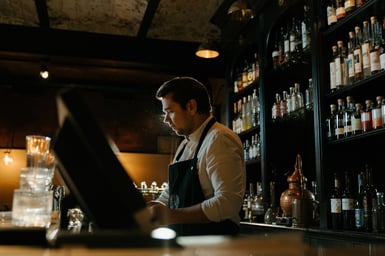 When it comes to running a successful bar, having the right inventory items and supplies is crucial. A well-stocked bar ensures smooth operations, customer satisfaction, and profitability. Let's explore some essential items and supplies that play a vital role in bar inventory systems and liquor inventory systems.
When it comes to running a successful bar, having the right inventory items and supplies is crucial. A well-stocked bar ensures smooth operations, customer satisfaction, and profitability. Let's explore some essential items and supplies that play a vital role in bar inventory systems and liquor inventory systems.
-
Liquor: The backbone of any bar, a wide selection of liquors is essential. This includes popular spirits like vodka, rum, gin, tequila, whiskey, and liqueurs. Bars should stock a variety of brands to cater to different preferences.
-
Beer and Wine: A diverse beer and wine selection is important to meet the preferences of customers. Stock popular beers, both domestic and craft, as well as a range of red, white, and sparkling wines.
-
Mixers and Garnishes: Mixers such as soda, tonic water, fruit juices, and bitters are essential for creating cocktails. Garnishes like citrus fruits, olives, cherries, and cocktail onions add the finishing touch to drinks and elevate the overall presentation.
-
Glassware: Proper glassware is vital for serving various beverages. Stock a variety of glass types, including pint glasses, wine glasses, highball glasses, martini glasses, and shot glasses. This ensures the appropriate vessel for different drinks and enhances the drinking experience.
-
Bar Tools: Equip the bar with essential tools such as shakers, jiggers, strainers, muddlers, bottle openers, bar spoons, and knives. These tools facilitate efficient drink preparation and enable bartenders to showcase their skills.
-
Cleaning Supplies: A clean bar is essential for maintaining hygiene and meeting health standards. Stock cleaning supplies like disinfectants, bar towels, sponges, brushes, and sanitizers to ensure a tidy and safe environment.
-
Inventory Management Software: To streamline bar inventory systems and liquor inventory systems, invest in inventory management software. These systems enable accurate tracking, recording, and analysis of inventory levels, helping with stock control, reordering, and preventing shortages.
-
Security Measures: Implementing security measures like surveillance cameras, liquor bottle locks, and employee training on inventory control can help prevent theft and unauthorized consumption.
-
POS System: A point-of-sale (POS) system is essential for efficient transactions and inventory management. It tracks sales, deducts items from inventory, and generates reports for better analysis and decision-making.
-
Backup Supplies: Always have backup supplies on hand for emergencies or unexpected demand spikes. This includes extra bottles of popular liquors, spare glassware, and additional stock of frequently used mixers.
In conclusion, a well-stocked bar requires essential items and supplies for effective bar inventory systems and liquor inventory systems. By carefully managing these inventory components, bars can ensure smooth operations, meet customer demands, and maximize profitability. Implementing a bar inventory system, utilizing technology like inventory management software and POS systems, and maintaining security measures all contribute to efficient inventory control and a successful bar operation.
Topics: liquor inventory, Bar inventory, Scannabar Inventory system
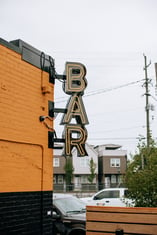 When it comes to conducting bar inventory, there are several effective methods that establishments can employ to ensure accurate tracking and control of their inventory, particularly in terms of "bar inventory" and "liquor inventory." Let's explore some of these methods in detail:
When it comes to conducting bar inventory, there are several effective methods that establishments can employ to ensure accurate tracking and control of their inventory, particularly in terms of "bar inventory" and "liquor inventory." Let's explore some of these methods in detail:
-
Manual Counting: This traditional method involves physically counting each item in the bar inventory. Bar staff or managers manually record the quantities of liquor bottles, beer kegs, wine bottles, mixers, and other bar supplies. While time-consuming, manual counting provides a hands-on approach to verify inventory levels accurately.
-
Barcode Scanning: Utilizing barcode scanning technology streamlines the inventory process. Each item is assigned a unique barcode, and a barcode scanner is used to scan items during the inventory count. This method enables quick and accurate recording of quantities, reducing human errors and saving time.
-
Digital Inventory Management Systems: Bar owners can leverage digital inventory management software specifically designed for bar operations. These systems provide user-friendly interfaces to record and track inventory, generate reports, and analyze consumption patterns. Digital systems can also integrate with point-of-sale (POS) systems to automate inventory updates based on sales transactions.
-
Weighing Systems: For liquid inventory like liquor, weighing systems offer an efficient method. Liquor bottles are placed on scales that are calibrated to measure the weight accurately. By subtracting the tare weight of the bottle, the system calculates the liquor content remaining. This method is particularly useful for tracking high-value liquor inventory.
-
Periodic Spot Checks: In addition to regular inventory counts, periodic spot checks can help identify any discrepancies or potential issues. Bar managers randomly select specific items from the inventory and verify their quantities. This method provides an extra layer of control and helps ensure the accuracy of the overall inventory count.
-
Integration with POS Systems: Integrating bar inventory management with POS systems offers real-time tracking of sales and inventory. As sales are made, the POS system deducts the corresponding items from the inventory automatically. This integration minimizes manual effort and provides accurate, up-to-date inventory information.
In conclusion, employing effective methods for conducting bar inventory is essential for accurate tracking and control, particularly regarding "bar inventory" and "liquor inventory." Whether through manual counting, barcode scanning, digital inventory management systems, weighing systems, periodic spot checks, or integration with POS systems, bars can optimize their inventory management processes and ensure the accuracy of their stock levels, leading to improved profitability and customer satisfaction.
Topics: liquor inventory, Bar inventory, bar inventory levels, Hotel Inventory


